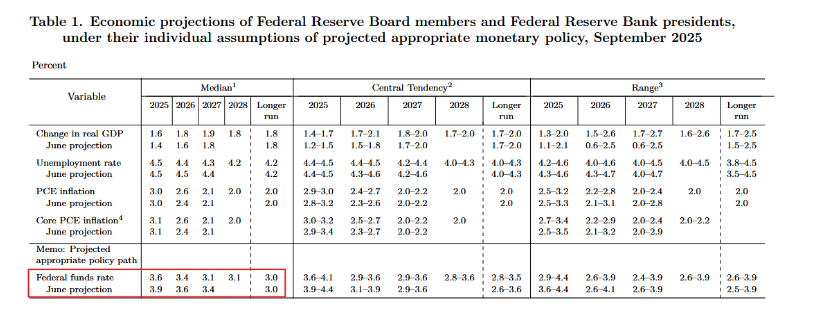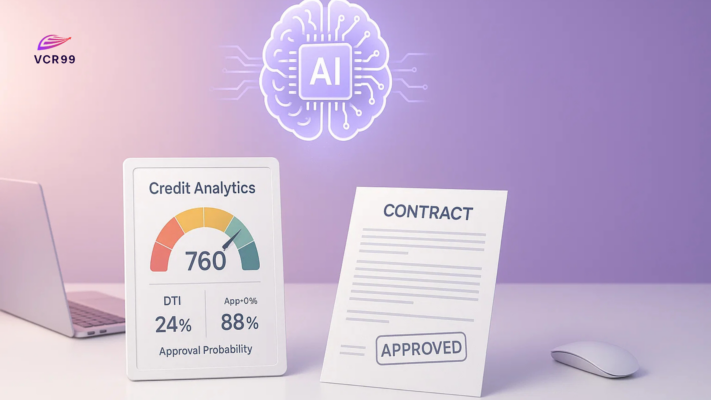
After months of anticipation, the U.S. Federal Reserve (Fed) has officially cut its benchmark interest rate, marking a major turning point in global monetary policy.
This decision signals the start of a new chapter for the U.S. economy and financial markets worldwide.
But the key question remains: What happens next?
Here’s VCR99’s analysis and forecast on what this move could mean for investors and markets in the coming months.
1. Why Did the Fed Cut Interest Rates?
According to Investing.com, the Fed’s decision comes amid clear signs of slowing inflation and cooling growth.
Key factors driving the rate cut include:
-
Inflation easing closer to the 2% target.
-
Labor market normalization, with job growth slowing to sustainable levels.
-
Recession risks rising if tight monetary policy continues too long, potentially hurting production and consumption.
In short, the Fed aims to support economic growth, ease borrowing costs, and prevent a deeper slowdown after two years of aggressive rate hikes.
2. The Ripple Effects of Lower Interest Rates
Impact on the U.S. Dollar (USD)
Lower rates reduce the yield advantage of the dollar, making it less attractive to global investors.
As a result, the USD may weaken, while gold and commodities could benefit as alternative stores of value.
Impact on Stocks
Lower borrowing costs are generally bullish for equities.
Companies can refinance debt cheaply, expand operations, and improve profitability.
Sectors likely to benefit include financials, technology, and real estate — all of which thrive in low-rate environments.
Impact on Bonds
Bond prices tend to rise when interest rates fall, as existing yields become more valuable relative to new issues.
Investors seeking stability may find long-term bonds particularly appealing during this cycle.
Impact on Gold and Safe-Haven Assets
A weaker dollar and lower rates often push investors toward gold and other safe-haven assets.
However, if the U.S. economy rebounds strongly, capital could flow back into equities, moderating gold’s gains.
3. VCR99’s Forecast: A New “Easing Cycle” Has Begun
In VCR99’s view, this rate cut represents more than a minor adjustment — it marks the beginning of a broader monetary easing cycle.
The Fed’s focus now is on reducing borrowing costs, reviving consumer demand, and stimulating private investment.
Over the Next Six Months:
-
Markets may experience a steady recovery if inflation remains contained.
-
Sectors like real estate, consumer goods, retail, and technology could see renewed growth.
-
Investors should watch key indicators such as CPI, PPI, and employment data to assess the pace of further cuts.
Potential Risks:
-
If rate cuts come too quickly, inflation could re-accelerate.
-
If global demand weakens, the stimulative impact may be limited, pushing capital toward gold and bonds instead.
4. What Should Investors Do Now?
1. Rebalance Your Portfolio
Shift from excessive cash positions into growth assets like stocks, mutual funds, and ETFs, while maintaining exposure to safe-haven instruments such as gold or bonds.
2. Take Advantage of Lower Borrowing Costs
For entrepreneurs or households planning to expand businesses or refinance loans, now is the time to secure cheaper credit.
3. Monitor Macro Data Closely
Track inflation, GDP, and employment reports. These will determine how long the Fed maintains its easing stance.
4. Avoid Emotional Trading
Even if markets rally, avoid chasing short-term gains.
Focus instead on long-term fundamentals and diversified investment strategies.
5. Broader Implications for the Global Economy
The Fed’s rate cut is widely viewed as a positive signal for global growth:
-
Businesses gain access to cheaper capital, supporting expansion.
-
Consumers face lower credit and mortgage costs, improving spending power.
-
Emerging markets, including Vietnam, may benefit from increased foreign capital inflows as global liquidity improves.
Still, caution is essential. Every investor should base decisions on data, risk tolerance, and financial goals, not short-term optimism.
6. Conclusion – From Policy Shift to Smart Financial Strategy
As the Fed moves into an easing phase, opportunities and risks emerge side by side.
Astute investors will look beyond short-term noise to build balanced, sustainable, and diversified portfolios that can thrive through any cycle.
VCR99’s key insight:
“Don’t try to predict the Fed’s next move — prepare for every scenario.”
Stay informed, remain disciplined, and let data-driven insights guide your financial journey through this new era of lower interest rates.
📍 VCR99 – Financial Membership Platform
Your trusted source for financial education, market insights, and smart personal finance tools.




